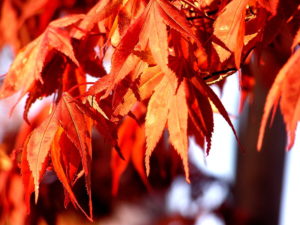
My friend and colleague Dr. Jeffrey H. Barker died suddenly in July of 2021. At the time, he was a few weeks into a one-year term as the 11th President of Converse University. Last week (Jan 25, 2023), Converse unveiled his Presidential portrait and celebrated his 20 year tenure at the university with a ceremony and reception. We also dedicated a tree–a Japanese Maple–in his honor on campus. I was asked to speak at the tree dedication. Below are my remarks.
I first met Jeff Barker on Valentine’s Day in 2007. I was on a campus visit—my first, and what would be my only—campus visit. I don’t remember much about that first meeting except that I was really nervous, and I was wearing a suit. I had never met a Dean before, and I wasn’t really sure what to expect. I had no idea what a Dean actually did . . . I certainly didn’t expect to one day be a Dean myself, but here we are. Over time, Jeff Barker went from being my Dean and my colleague, to becoming a mentor and my friend. It is my honor to speak today in the presence of family, friends, and esteemed members of the Converse community.
Those who know me know that I am a book person. That means that I trade in language, in words, in text. When President Hopkins asked me to speak today, I immediately thought about a 2018 book by a writer named Richard Powers called The Overstory. Like the rest of Richard Powers’s work, The Overstory is about a lot of things—it is 500 pages long after all—but primarily, it is a book about trees and the relationship between trees and humankind. In fact, its opening pages are narrated by a chorus of trees, a variety of species all talking to and over each other: alders, poplars, oaks, laurels (no Japanese maples, unfortunately). . . and then the trees turn their attention to us, to people, addressing us directly: “All the ways you (people) imagine us (the trees) . . . are always amputations. Your kind never sees us whole. You miss the half of it, and more. There’s always as much below ground as above.”
I focus us here on this quotation because it centers us on the act of seeing, of perceiving . . . which we often consider to be passive, something that just happens, rather than something we purposefully do. Here in the quotation, seeing is active and powerful, even violent (Powers uses the word “amputations,” after all). It’s something essential and vital, and it’s also something that we as human beings are oftentimes really bad at. It’s something that we do without thinking, and often without the sense of possible consequence. Not Jeff Barker.
One of Jeff’s gifts was that of perspective. F. Scott Fitzgerald famously wrote, “The test of a first-rate intelligence is the ability to hold two opposing ideas in mind at the same time and still retain the ability to function.” Jeff could do that.
He was something like a human kaleidoscope, able to consider multiple and often competing perspectives at the same time, sometimes 4 or 5 together: administrator, faculty member, student, parent, lawyer, community member . . . Being able to hold them all (or many of them all) in mind can be confusing, frustrating, and just plain exhausting—trust me, I know. But Jeff made it look easy. It really isn’t.
What I love about this tree, and the place that this tree now occupies on our campus, is how it embodies that very quality of Jeff’s. It is located–literally–at the center of many different paths, providing many different perspectives. If you look South, you’ll see the library, the home of so much knowledge in its stacks as well as the Center for Academic Excellence, an initiative that Jeff was especially pleased to support. It also houses the archive, the site of our history and our institutional memory. If you look North, you’ll see Dexter Hall, one of the oldest residential halls on our campus, the home for our students, or at least some of our students. If you look to the Northeast, you’ll see Wilson Hall, the heart of our campus: the locus of the dining hall, where we eat together, have sometimes danced together, and sometimes—when the weather has not cooperated—celebrated Founder’s Days and graduations together. It also houses the President’s office, an office that Jeff occupied for too short a time. To the West, you’ll see Carmichael. Carmichael houses, among other things, faculty offices and classrooms. Carmichael was also Jeff’s Converse home. Carmichael is where I first met him that day so long ago, and Carmichael is where he spent the lion’s share of his time on campus. I still look for his car in the parking lot and even now, I expect to see him through the window of 206.
Jeff loved Converse.
He often quoted the late JoAnn Lever with reverence; she said, “Converse is a special place.”
While there were elements of the physical plant that drove him up the walls and back again—especially in Carmichael Hall, he was devoted to this place, to her people, and especially to her students, to our students.
He was fiercely protective and unabashedly proud of our students and their accomplishments whether academic, artistic, athletic, interpersonal, or something else entirely. I can’t think of a better place to commemorate him as well as everything that he has given to us over the years than the intersection of these many paths to learning and teaching, to working and living, performing and celebrating—everything about Converse that he held so dear.
I am grateful to President Hopkins, to Jan, and to you all for being here with us this evening to honor our colleague, our leader, our friend Dr. Jeffrey H. Barker. Thank you.

1 pings